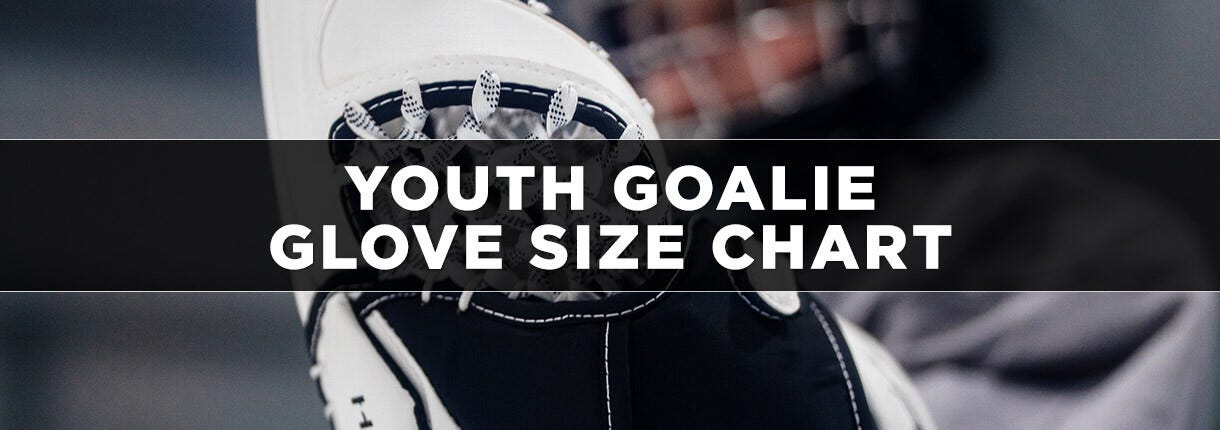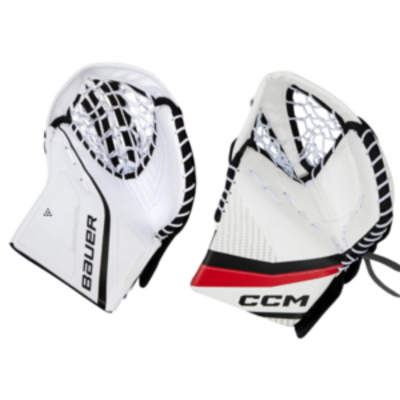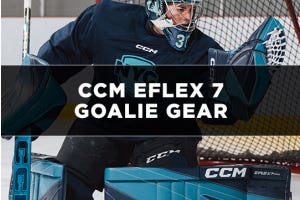Youth Goalie Glove Size Chart: Find the Perfect Fit

Youth hockey goalie gloves are essential pieces of equipment that play a crucial role in a young player’s performance and safety on the ice. These gloves are designed to provide adequate protection while allowing for the dexterity needed to handle the puck effectively. Choosing the right size is particularly important, as improperly fitted gloves can hinder a goalie’s ability to catch and control the puck, potentially leading to injuries or missed saves. A glove that is too large may limit mobility and control, while one that is too small can restrict hand movement and cause discomfort. Furthermore, the right size ensures that the protective padding fits securely over the hands and fingers, minimizing the risk of injury from pucks or collisions. As young goalies develop their skills, having properly sized gloves not only enhances their confidence but also allows them to focus on honing their techniques without worrying about the limitations of their equipment. Overall, investing in high-quality, well-fitting goalie gloves is essential for fostering a safe and effective learning environment for young players in the sport of hockey.
Importance of Proper Fit for Youth Goalie Gloves
Properly fitting gloves significantly impact a young goalie’s performance and safety, influencing their overall effectiveness on the ice. When gloves fit correctly, they provide the necessary flexibility for quick hand movements, allowing goalies to react swiftly to shots and passes. This agility is essential for making saves and playing the puck effectively, as restricted movement can hinder a goalie’s ability to position their hands accurately. Additionally, well-fitted gloves enhance grip, enabling goalies to catch and control the puck more securely. A glove that is too loose can result in fumbling, while one that is too tight can reduce dexterity. Furthermore, safety is a critical consideration; properly sized gloves ensure that protective padding aligns correctly with the hands and fingers, minimizing the risk of injury from high-velocity pucks or collisions. By prioritizing the right fit, young goalies can enhance their confidence, improve their gameplay, and maintain safety on the ice, fostering a positive development experience in their hockey journey. Visit our Hockey Goalie Glove Buying Guide to find out more.
How to Measure for Youth Goalie Gloves
1. Gather Materials: Obtain a flexible measuring tape or a piece of string and a ruler.
2. Position the Hand: Have the young goalie sit comfortably at a table with their dominant hand extended flat and fingers together, palm facing up.
3. Measure Hand Length: Using the measuring tape, measure from the base of the palm (where the wrist meets the hand) to the tip of the longest finger. If using string, mark the length and then measure it against a ruler.
4. Measure Hand Width: To determine hand width, measure across the widest part of the palm (usually just below the fingers). Again, use the measuring tape or string and ruler to get the measurement.
5. Record the Measurements: Write down both the length and width measurements to ensure accuracy.
6. Consult Size Charts: Use the measurements to consult the manufacturer's size chart for goalie gloves. Each brand may have slightly different sizing, so refer to the specific chart for the chosen brand.
7. Select the Size: Based on the measurements and the size chart, select the appropriate glove size. If the measurements fall between sizes, it’s often advisable to choose the larger size for comfort and flexibility.
8. Try On the Gloves: Once the gloves are selected, have the young goalie try them on to ensure they fit snugly but comfortably. The fingers should reach the tips of the glove, and there should be no excessive room.
9. Check for Movement: Ensure the goalie can move their fingers and wrist freely, as this flexibility is crucial for effective performance on the ice.
10. Adjust if Necessary: If the gloves feel too tight or too loose, consider trying a different size or model to find the perfect fit.
Youth Goalie Glove Size Chart
Here’s a comprehensive size chart for goalie gloves, including measurements in inches and centimeters for Youth, Junior, Intermediate, and Senior sizes:
| Glove Size | Hand Length (inches) | Hand Length (cm) |
|---|---|---|
| Youth | 4.5 - 5.5 | 11.4 - 14.0 |
| Junior | 5.5 - 6.5 | 14.0 - 16.5 |
| Intermediate | 6 - 7 | 15.2 - 17.8 |
| Senior | 7 - 8.5 | 17.8 - 21.6 |
Notes:
- Measurements: Hand length is measured from the base of the palm to the tip of the longest finger, while hand width is measured across the widest part of the palm.
- Fit: It’s recommended to try on gloves before purchasing to ensure the best fit, as brands may vary slightly in sizing.
Tips for Choosing the Right Goalie Gloves


Consider the Material: Look for gloves made from high-quality materials such as synthetic leather or nylon, which provide durability, flexibility, and protection. Thicker padding is beneficial for enhanced safety and impact resistance.
Check Brand Reputation: Choose gloves from well-known and reputable brands that specialize in goalie equipment, such as CCM, Bauer, or Warrior. These brands often have a proven track record for quality and performance.
Assess Fit and Comfort: Ensure the gloves fit snugly without being too tight. They should allow for finger movement and grip while providing adequate protection. Trying them on, if possible, can help gauge comfort.
Evaluate Durability: Look for reinforced seams and materials designed to withstand the wear and tear of regular play. Durable gloves will last longer and provide better value over time.
Review Age and Skill Level: Select gloves that are appropriate for the young goalie's age and skill level. Beginners may benefit from gloves that prioritize ease of use, while more advanced players might prefer gloves that offer greater protection and performance features.
Consider Weight: Lighter gloves can enhance mobility and speed, which is crucial for a goalie’s performance. However, ensure that the weight does not compromise protection.
Seek Feedback: Consult with coaches or experienced players for recommendations based on their firsthand experiences. Their insights can guide you toward the best options for your young goalie.
Budget Wisely: Set a budget but remember that investing in a good pair of gloves can improve performance and safety. Look for sales or discounts from reputable retailers to get quality gloves at a better price.
Common Fit Issues and Solutions
Gloves That Are Too Tight
One common issue with youth goalie gloves is that they can be too tight, restricting movement and causing discomfort. When gloves fit too snugly, young goalies may struggle to catch or grip the puck effectively, which can impact their performance. This tightness can also lead to fatigue, as players may exert extra effort to maneuver their hands. To address this issue, it’s essential to try on gloves before purchasing. If the gloves feel restrictive, consider opting for a larger size or exploring models with adjustable features, such as velcro straps or flexible materials that can provide a bit of stretch. Additionally, players can break in their gloves gradually, using them off the ice to loosen up the material and improve flexibility.
Gloves That Are Too Loose
Conversely, gloves that are too loose can also pose significant challenges for young goalies. Excessively loose gloves can compromise grip, making it difficult to catch the puck securely and increasing the risk of fumbles during play. Moreover, this lack of a snug fit may result in inadequate protection, as the padding might not align correctly with the hands and fingers. To resolve this issue, players should seek gloves that fit snugly around the wrist while allowing for some finger movement. If the gloves are slightly too large, consider using glove liners or wearing thin gloves underneath to fill any extra space. Ensuring that the gloves have proper closure systems, such as adjustable wrist straps, can also help achieve a more secure fit.
Finding the Right Balance
Ultimately, finding the right balance in glove fit is crucial for optimal performance and safety. Young goalies should prioritize trying on multiple pairs and sizes to determine what feels best for their unique hand shape and size. It’s important to keep in mind that as young players grow, their glove sizes may change, so regular reassessment of fit is necessary. By being proactive about fit issues and seeking out solutions, young goalies can enhance their gameplay and enjoy a more comfortable and secure experience on the ice.
Youth Goalie Glove Size Chart FAQs
What is the most accurate way to measure for youth goalie gloves?
The most accurate way to measure for youth goalie gloves is to measure the hand length from the base of the palm to the tip of the longest finger and the hand width across the widest part of the palm, then consult the manufacturer’s size chart.
How often should youth goalie gloves be replaced?
Youth goalie gloves should be replaced every 1-2 years, depending on the frequency of use and wear. Regular inspection for damage or significant wear can also indicate when it’s time for a replacement.
Do youth glove sizes differ between ice hockey and inline hockey?
Generally, youth glove sizes do not differ significantly between ice hockey and inline hockey; however, it’s important to check specific brand sizing charts, as some may have slight variations.
Can youth goalie gloves be adjusted for a better fit?
Yes, many youth goalie gloves come with adjustable features like wrist straps or elastic bands that can help achieve a better fit and enhance comfort.
How do I know if my child's goalie gloves fit properly?
Properly fitting gloves should feel snug but not restrictive, allowing for finger movement while securely protecting the hands. The fingers should reach the tips of the glove without excessive room.
What are the signs of ill-fitting goalie gloves?
Signs of ill-fitting goalie gloves include restricted finger movement, excessive looseness, discomfort or pain when worn, and an inability to catch or control the puck effectively. If the gloves slide off easily or the padding does not align with the hand, they may not fit properly.











